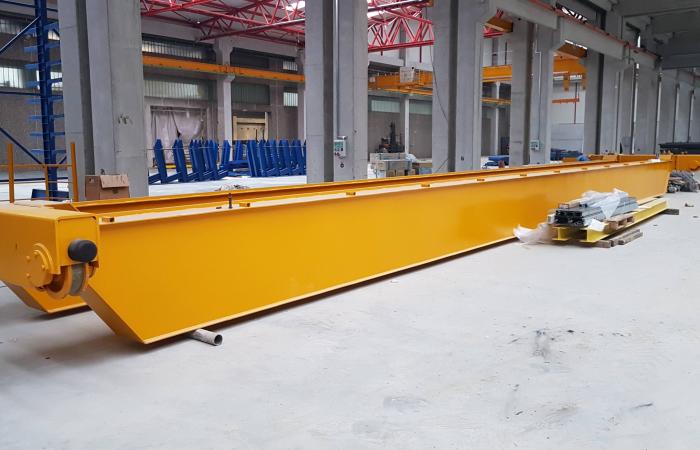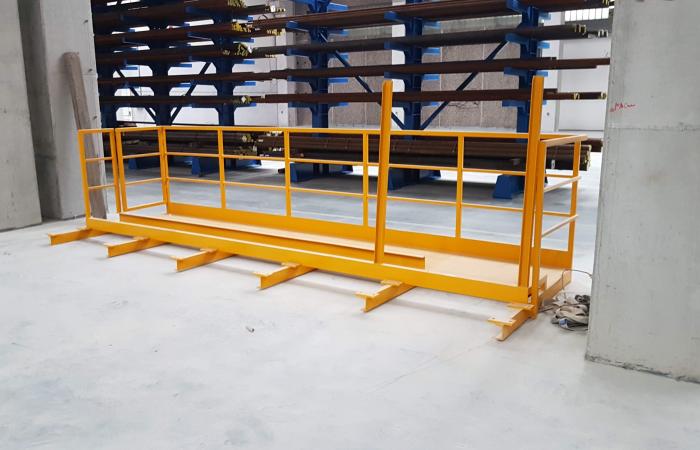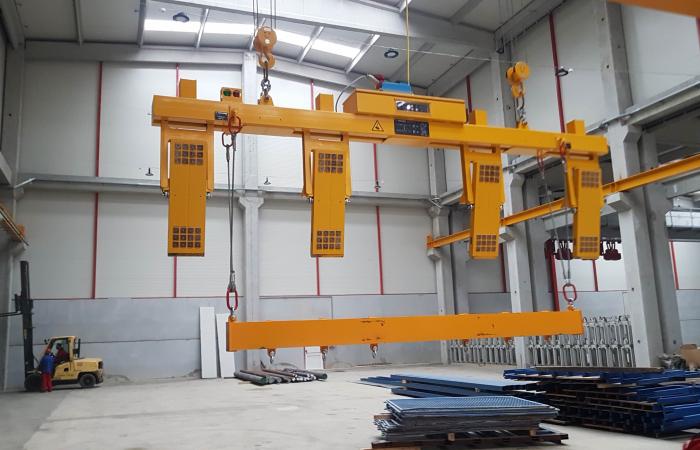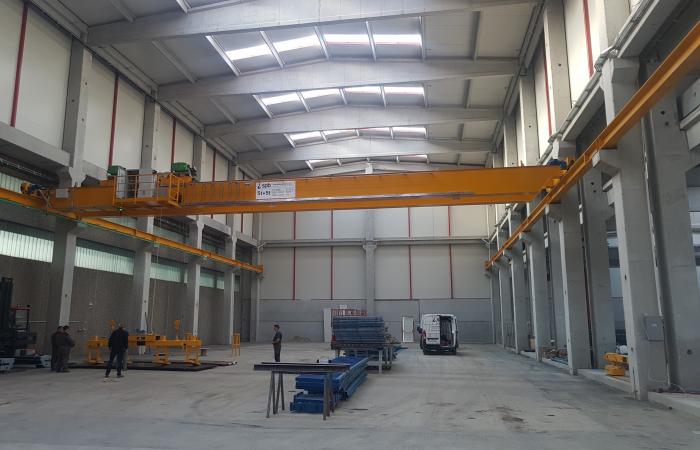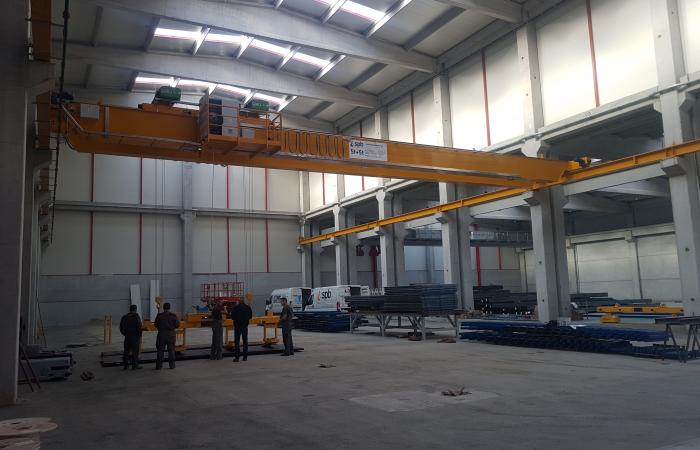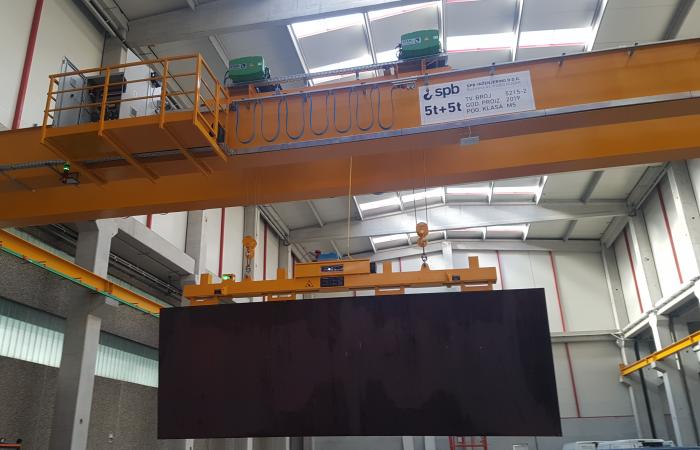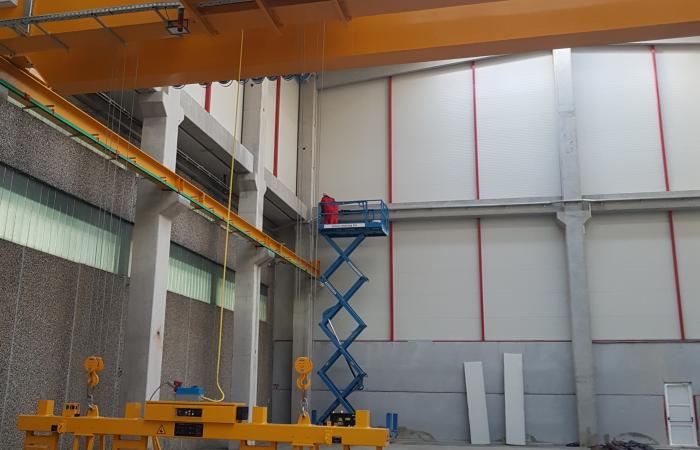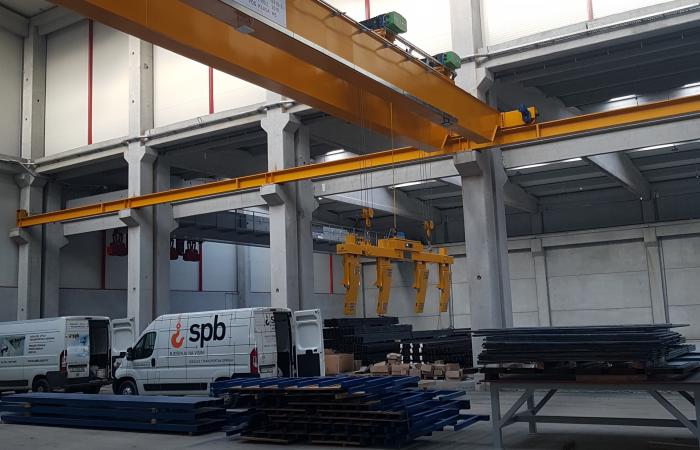Double-girder bridge crane DMD 5 t + 5 t / 22,1 m
PROJECT NAME: Double-girder bridge crane DMD 5 t + 5 t / 22,1 m
INVESTOR: Mick Ltd.
LOCATION: Stupnik
YEAR OF PRODUCTION: 2019.
TECHNICAL CHARACTERISTICS:
- maximum crane capacity: 5 t + 5 t
- bridge span: 22,1 m
- lifting height: approx. 7,4 m
- maximum height from the floor to the lower edge of the magnetic poles with an unloaded magnetic beam: 5,35 m
- maximum height from floor to sheet metal suspended on a magnetic beam when transporting sheets in a horizontal position: 5,84 m
- load lifting speed (frequency reg.):
- 16 (max 24)/10/6/2 m/min
- hoist travel speed (frequency reg.): 60/40/20/5 m/min
- bridge travel speed (frequency reg.): 25/15/12/5 m/min
TECHNICAL DESCRIPTION:
For the needs of investors, company Mick Ltd., a project was made for the installation of a double-girder bridge crane with a load capacity of 5 t + 5 t, a bridge span of 22,1 m, and a lifting height of approx. 7,4 m. The crane was installed in investors storage halls in Donji Stupnik near Zagreb. The warehouse is intended for receiving, storing and shipping steel sheets 6 m long and 1,5 or 2 m wide.
All working movements of the crane: lowering/raising the load, driving the bridge and electric hoist with frequency converters that ensure easy starting and stopping with continuous acceleration or deceleration of working movements, without jerks and bumps. The crane is also equipped with an electronic system controlled via a PLC, which in the operation of the crane ensures maximum mitigation of load oscillations when stopping the drive of the bridge or driving hoist.
The crane is controlled via a remote radio control unit, and as a backup control in case of emergency, a suspended control button with reduced voltage is installed, which will be connected via a connector on the electrical cabinet of the crane.
The crane basically consists of the following parts:
- steel crane structures,
- two hoists with individual nominal load capacity 5 t,
- drive mechanisms for driving the bridge,
- electrical equipment to power the crane device and control it.
For the manipulation of steel sheets, a lifting beam with electromagnets with a load capacity of 3,5 t will be hung on the crane hoists. For the needs of transporting sheets whose mass ranges from 3,5 to 8 t, the lifting beam is additionally equipped with four fixed hooks, with a total nominal load capacity of 8 t.
Given the conditions and frequency of operation, the crane is classified in II. operating class, which corresponds approximately to group M5 according to ISO 4301/1 (or group 2m according to FEM 1.001), for mechanisms.
The electrical equipment of the crane consists of:
- electric motors of the lifting mechanism with brake,
- two electric motors with brake for driving a hoists,
- two electric motors with brakes for driving the bridge,
- control cabinet,
- PLC for control and monitoring of crane mechanisms,
- braking resistors of motor drives,
- limit switches for switching off the lift drive, the hoist drive and the bridge drive,
- overload device,
- remote control radio,
- anti-sway system,
- suspended cable control unit with reduced voltage (reserve),
- main switches, and
- power and control cables within the crane itself.
The crane is equipped with the following electromagnetic equipment for working with steel sheets:
- electromagnetic beam with four electro permanent magnetic modules,
- control electrical cabinet for power supply and operation of electromagnets and signaling equipment,
- spring cable drum for powering the electromagnetic beam with electric energy,
- two magnetic beam storage racks.
The magnetic beam is manufactured by "TECNOMAGNETE" Italy. The subject electromagnetic equipment is of the type of electro permanent magnets. Magnetic modules are essentially permanent magnets, which are magnetized and demagnetized by electrical energy. The advantage of this technology in relation to classical electromagnets is that the current is consumed only in the cycles of magnetization and demagnetization of permanent magnetic modules.
